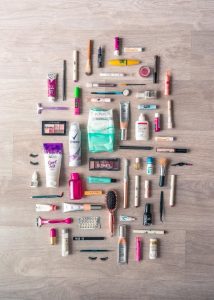How to Approve Beauty Product Ads Through Cloaking? Solution To Restricted Category Businesses
The beauty industry demands digital marketing through beauty product ads to increase sales. However, certain beauty products fall within the restricted niche business niche. They are restricted by ad platforms to run beauty product ads.
Thus, leading to constant ad rejections and inability to reach your target audience.
This guide will take you through the intricacies of beauty product ads. We will explore the art of gaining approval for beauty product ads through ad cloaking.
We will also delve into what restricted beauty products are, provide an overview of ad cloaking, and highlight the importance of ad approval for beauty product ads. Additionally, you will learn the common challenges faced by beauty product advertisers and discuss strategies for analyzing and optimizing ad performance.
This article is your gateway to unlocking the secrets of promoting beauty products in a restricted category.
What Are Restricted Beauty Products?
It is essential to understand which beauty products are labeled as restricted. This will help you successfully navigate the world of beauty product advertising.
Ad platforms subject these products to stringent advertising guidelines to protect consumers and maintain the integrity of the online advertising ecosystem.
Common examples of restricted beauty products include:
⦁ Cosmetic Procedures:
This category encompasses cosmetic surgeries, injectables, and other procedures often associated with beauty enhancement.
⦁ Skin Lightening Products
These products raise concerns about promoting potentially harmful ingredients or perpetuating harmful beauty standards.
⦁ Weight Loss Supplements
Weight loss is a highly competitive and potentially risky industry. Platforms want to ensure that weight loss product ads are not making false or dangerous claims.
⦁ Prescription Medications
Ad platforms closely monitor any promotion of prescription medications, even for beauty-related purposes, to prevent unauthorized sales or false claims.
Overview of Ad Cloaking in the Beauty Industry
Amidst abrupt beauty product ads rejection, ad cloaking has emerged as a powerful strategy for overcoming the challenges.
It is a marketing technique that allows advertisers to display one version of an ad to the advertising platform’s review system while showing a different version to the target audience.
This results in various benefits and opportunities in favor of the advertisers
⦁ Policy Compliance
You can use ad cloaking to ensure that the version of your ad presented to the platform for review adheres to all policies. This can help prevent ad disapprovals and account suspensions.
⦁ Consumer Experience
A seamless experience for customers is created by displaying a different content page. This leads to higher click-through rates and improved ad performance.
⦁ Adaptability
The beauty industry is constantly evolving with new trends and products. Ad cloaking allows you to quickly adapt your ad content to meet changing policies and customer preferences.
⦁ Market Expansion
For businesses operating in multiple regions, ad cloaking can facilitate the display of region-specific content that complies with local regulations.
⦁ Competitive Advantage
Ad cloaking can give you an edge over competitors by facilitating restricted products that may seem difficult to market.
Importance of Ad Approval for Beauty Product Promotion
For any restricted niche business, securing ad approvals is considered paramount. It results in several key advantages for businesses, aiding business expansion and platform compliance.
Ad approval for beauty product ads develops credibility in the business in the beauty space. It lends credibility to your brand and products. Consumers are more likely to trust and engage with ads that are compliant with platform policies.
In addition, approved beauty product ads lead to higher visibility. A wider reach means more potential customers, helping you expand your customer base and increase sales.
Similarly, non-compliant ads and ad rejections can lead to account suspensions or even legal consequences.
Compliant ads result in concrete brand building. When more people see your ads, your brand becomes more recognizable, which can lead to increased customer loyalty and trust.
Furthermore, cloaked beauty product ads have higher click-through rates (CTRs), lower costs per click (CPCs), and improved ad positions. Thus, leading to effective and successful advertising campaigns.

Common Challenges in Beauty Product Ad Approval
Securing ad approvals for beauty product ads can be daunting. The following challenges that advertisers face will help you craft enhanced ad campaigns for your beauty brand.
One of the most prevalent challenges in the beauty industry is the use of misleading claims. This inculcates exaggerating the effects of the product, promising unrealistic results, or using before-and-after images that may not accurately represent the product.
Subsequently, beauty products necessitate scientific evidence or clinical trials. Otherwise, they might experience ad rejections.
In addition, certain beauty products containing banned restricted ingredients or prohibited chemicals clash with advertising policies. Advertisers need to ensure that their products are free from safety concerns.
Using images in beauty product ads is common. However, following image guidelines is essential. Advertisers should avoid using overly graphic or shocking images, before-and-after photos that exaggerate results, or images that may be deemed inappropriate.
Furthermore, certain beauty products may have age restrictions. Advertisers must ensure that their ads are shown to the appropriate age groups.
Analyzing and Optimizing Your Beauty Product Ad Performance
Navigating through challenges associated with beauty product ads also requires effective optimization of your ad campaigns.
Analyzing and optimizing beauty product ads incorporates
⦁ Data-driven decision-making
Use of analytics tools to track key metrics like click-through rates (CTRs), conversion rates, and ad spending. Analyzing this data allows you to make informed decisions about your advertising strategy.
⦁ A/B Testing
A/B testing involves testing multiple versions of ad copies with slight variations and comparing their performance. This approach can help you identify what resonates best with your target audience and fine-tune your ad content.
⦁ Content Optimization
Ensure that your ad content complies with advertising platform guidelines and highlights the unique selling points of your products.
⦁ Landing Page Optimization
Make sure to offer a seamless user experience on your landing page and optimize it for conversions.
⦁ Keyword Targeting
Choose relevant and high-intent keywords to ensure your ads reach the right audience. Refine your list of keywords regularly to stay competitive.
⦁ Ad Schedule & Geo-Targeting
Schedule your ads accordingly and use geo-targeting to reach specific regions, ensuring your ads are relevant to the local audience.
⦁ Compliance Check
Utilize ad cloaking techniques to present a compliant version to the platform’s review system while maintaining an effective ad for your audience.
⦁ Quality Score Improvement
Some platforms, like Google Ads, assign a Quality Score to your ads based on their relevance and performance. Improving your Quality Score can lead to lower costs and better ad placement.
Conclusion
We explored the significance of ad approval for beauty product promotion, delved into common challenges faced by beauty product advertisers, and discussed techniques for analyzing and optimizing ad performance.
As a beauty product advertiser, it is vital to stay informed, adapt to changing consumer preferences, and leverage innovative strategies. Thus, helping you market your business through effective beauty product ads. In addition, this aids you to drive conversions and upsurge sales.
Explore Ads Cloaking for effective ad approvals for your beauty product ads and embrace the evolving trends to propel your brand to new heights in the dynamic world of digital advertising.
Related Posts
What Are The Common Methods and Tools…
What Are The Common Methods and Tools Used in Pinterest Ads Cloaking?
CBD Marketing Agency Trends: What’s Working Now?
Wondering what are the latest trends for marketing CBD products? If yes,


Leave A Reply